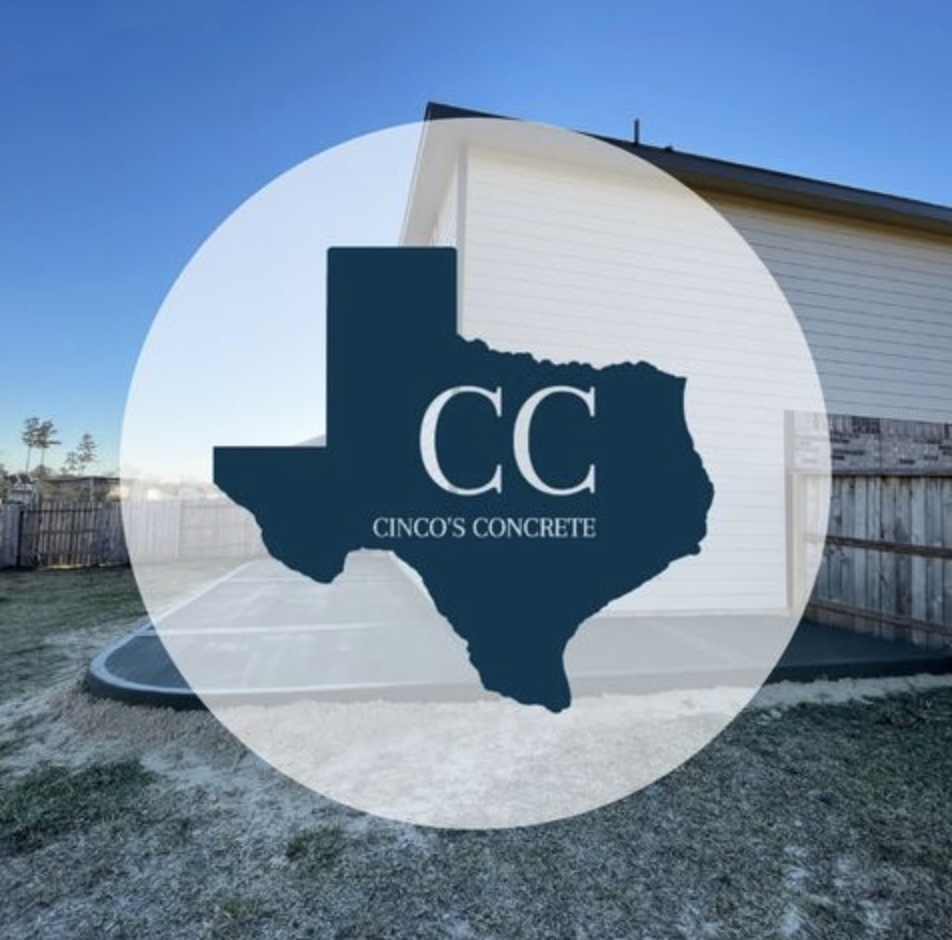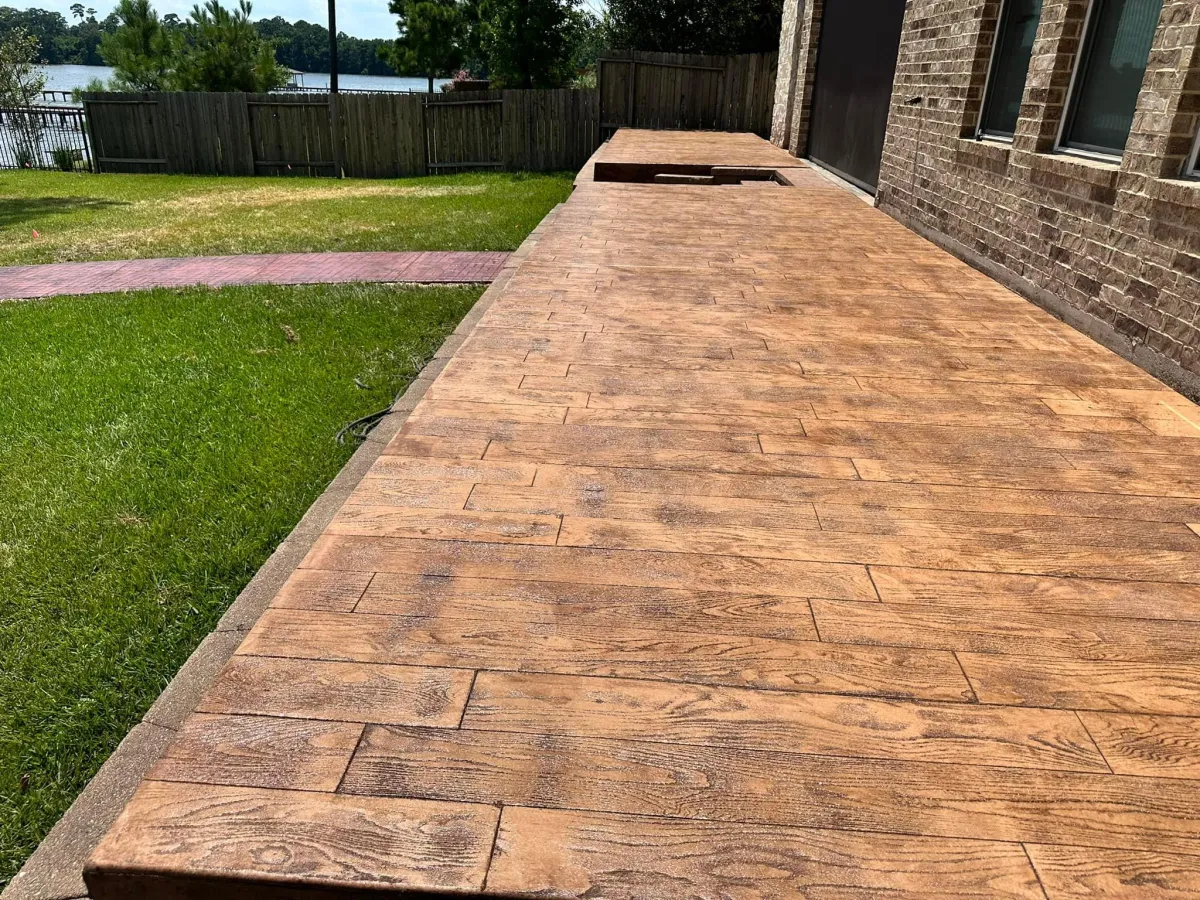
What's the average cost to install a concrete patio?
What's the Average Cost to Install a Concrete Patio?
The average cost to install a concrete patio varies significantly. Prices typically range from $4.50 to $18.00+ per square foot. This broad range depends heavily on the complexity of the project.
For a standard, broom-finished concrete patio, you can expect to pay on the lower end. This usually includes basic site prep and a 4-inch slab. These are functional and durable.
Adding decorative elements like stamping, coloring, or intricate designs will place the cost on the higher end. These finishes require more skilled labor and specialized materials.
To illustrate, consider common patio sizes:
A 10x10 foot (100 sq ft) patio might cost $450 to $1,800+.
A 15x15 foot (225 sq ft) patio could range from $1,012 to $4,050+.
A 20x20 foot (400 sq ft) patio averages $1,800 to $7,200+.
A 25x25 foot (625 sq ft) patio might be $2,812 to $11,250+.
These are averages. Your specific project's cost will be determined by a detailed quote from concrete patio contractors. Each element chosen contributes to the final price.
Key Factors Influencing Concrete Patio Costs
Many variables contribute to the final price of a concrete patio. Understanding these components allows for more accurate budgeting. Each factor directly impacts the labor and material expenses.
1. Patio Size and Shape
The total square footage of your patio is a primary cost determinant. Larger patios generally have a lower per-square-foot cost due to economies of scale. Material delivery and setup costs are spread over a larger area.
However, complex shapes increase labor. Simple squares or rectangles are the most cost-effective. Patios with curves, multiple angles, or custom designs require more intricate formwork and cutting. This adds to labor time and material waste.
2. Slab Thickness and Concrete Mix (PSI)
The thickness of the concrete slab is crucial. Most residential patios are 4 inches thick. This provides sufficient strength for light foot traffic and outdoor furniture.
For heavier loads, such as a hot tub, outdoor kitchen with heavy appliances, or occasional vehicle access, a 5-inch or 6-inch slab is recommended. Thicker slabs require more concrete volume and often more excavation.
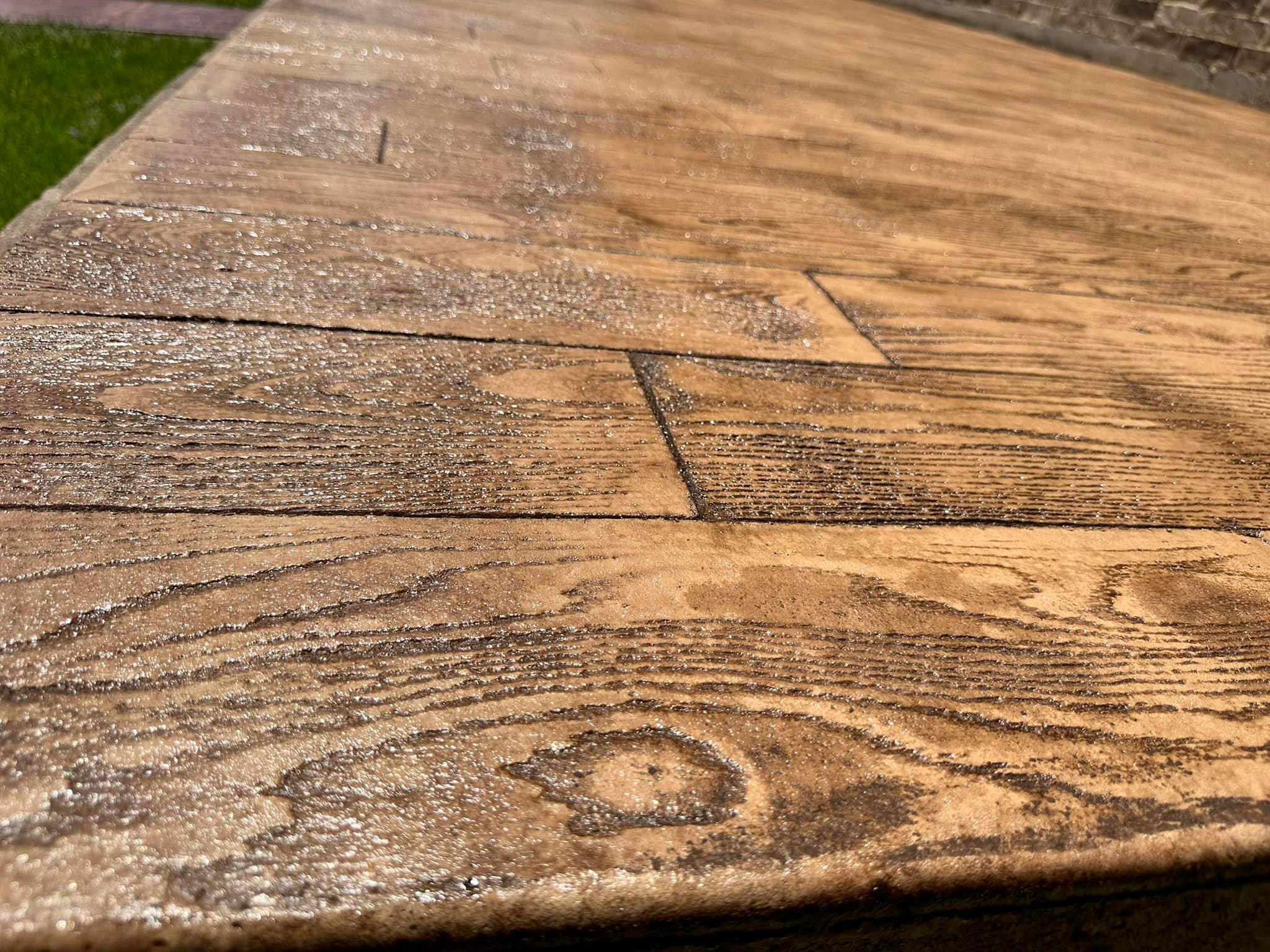
Concrete strength is measured in Pounds per Square Inch (PSI).
2,500 - 3,000 PSI: Standard for basic patios. Most affordable.
3,500 - 4,000 PSI: Provides increased durability and crack resistance. Recommended for areas with freeze-thaw cycles or heavier use. This higher PSI concrete costs more per cubic yard.
Admixtures are also often added to the concrete mix.
Air-entrainment: Improves concrete's resistance to freeze-thaw damage, essential in colder climates.
Water reducers: Allow for a stronger, more workable mix with less water.
Fibers: Synthetic fibers can be added to reduce plastic shrinkage cracking.
Each admixture contributes a small amount to the per-cubic-yard cost.
3. Site Preparation and Excavation
The condition of your existing site significantly impacts the cost. Proper site preparation is fundamental for a long-lasting patio.
Clearing and Debris Removal: If the area has dense vegetation, rocks, old concrete, or other debris, removal will add to the cost. This can involve labor for clearing or equipment rental.
Excavation Depth: The patio area must be excavated to accommodate the desired slab thickness and sub-base. Digging through hard soil, clay (like Houston's expansive clay), or rocky ground increases labor time and equipment needs.
Demolition: If an existing patio, deck, or shed needs to be removed, demolition and disposal fees apply. This can range from $2 to $6 per square foot depending on the material and thickness.
Grading and Drainage: Proper grading ensures water drains away from your home's foundation. If the site requires significant leveling or sloping, or if French drains or other drainage solutions are needed, these add to the cost.
Thorough site preparation prevents future problems like settling or water damage. It is a critical investment in your patio's longevity.
4. Sub-Base Materials and Compaction
A stable and well-compacted sub-base is essential under any concrete patio. It provides uniform support and improves drainage. This prevents settling and cracking of the concrete over time.
The most common sub-base material is gravel or crushed stone. It is typically installed 4-6 inches deep for patios. Material costs depend on local availability and delivery.
Labor is required to spread the aggregate evenly. It then needs to be thoroughly compacted using a plate compactor. This process ensures a dense, stable foundation.
5. Reinforcement
Adding reinforcement increases the tensile strength of the concrete. It helps control cracking caused by temperature changes, ground movement, or heavy loads.
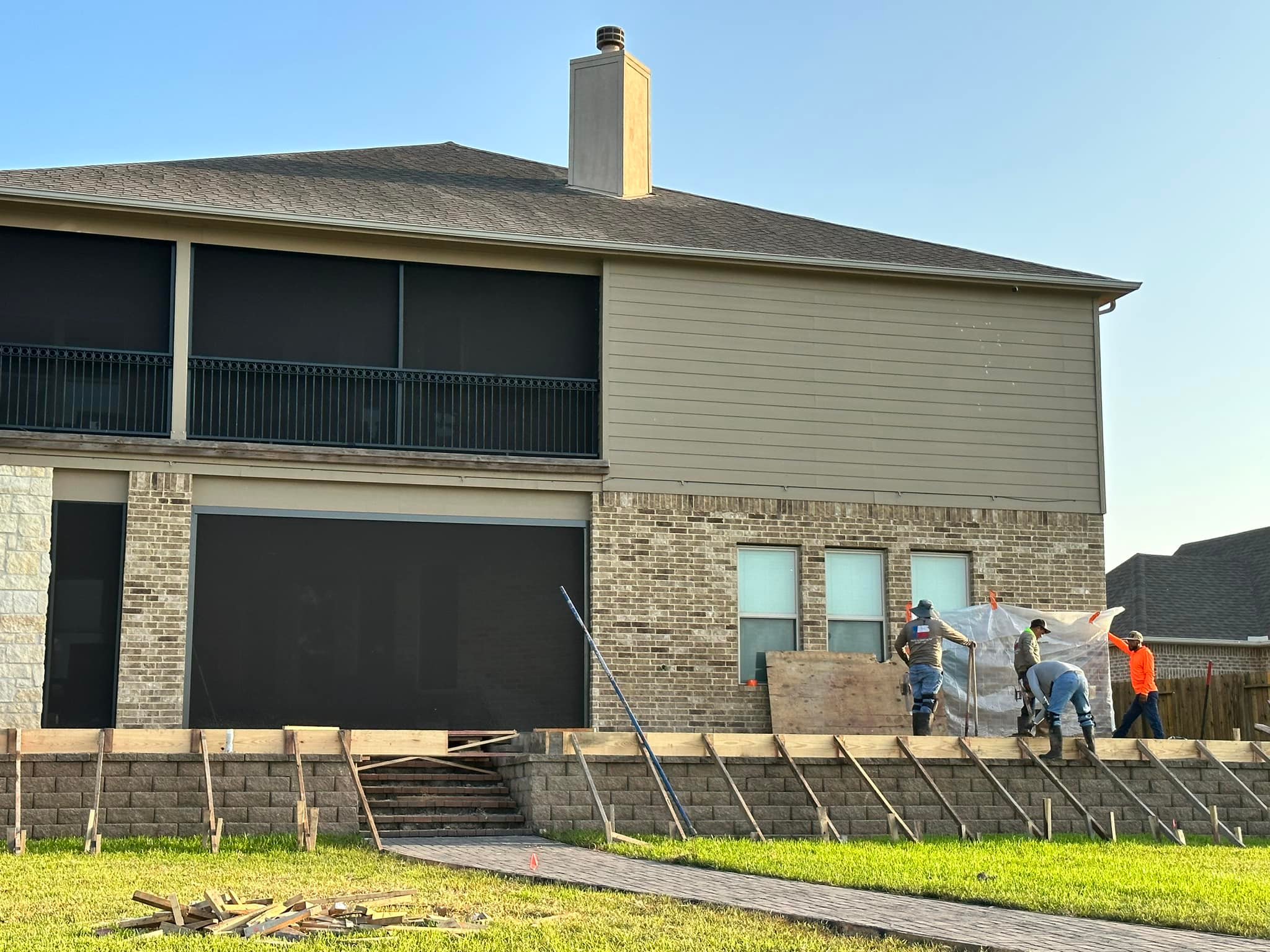
Wire Mesh: The most common and economical option for patios. It's laid out before the pour.
Rebar (Reinforcing Bar): Steel bars offer superior strength and are used for heavier-duty applications or larger slabs. Rebar is more expensive per square foot and requires more labor to cut and place.
Fibers (as an admixture): Can also provide additional crack resistance.
While adding to material and labor costs, reinforcement is a small investment. It significantly enhances the patio's durability and longevity.
6. Formwork Complexity
Formwork defines the exact size, shape, and height of your concrete patio. It's typically constructed from lumber (like 2x4s or 2x6s) and stakes.
Simple Shapes: Straight, rectangular or square patios are easier to form. This keeps formwork labor costs lower.
Complex Designs: Patios with curves, multiple angles, steps, or multi-level designs require more material. They also demand more skilled labor and time for precise setup.
Custom designs mean custom formwork. This increases both material waste and the labor portion of the cost.
7. Accessibility and Delivery Fees
The ease of access to your patio site affects the overall cost. Large concrete trucks need clear access to discharge material efficiently.
Distance from Plant: Concrete is delivered by ready-mix trucks. The further your home is from the concrete batch plant, the higher the delivery fees will be. Fuel surcharges are common.
Site Accessibility: If the truck cannot back up directly to the patio area, concrete must be moved. This can be done by wheelbarrow, which is very labor-intensive.
Concrete Pump Rental: For difficult access, long distances, or elevated pours, a concrete pump truck can be used. Pump rental is a significant additional cost, often hundreds of dollars for a minimum charge.
Challenging access translates to higher labor costs or the added expense of a pump truck. This factor is crucial for accurate quotes.
Finishing Options and Their Impact on Cost
The finish you choose for your concrete patio is arguably the largest variable impacting the final price per square foot. Decorative finishes elevate the patio's aesthetic significantly.
1. Basic Finishes (Most Affordable)
These finishes provide a functional, durable surface at the lowest cost. They are usually included in the base per-square-foot price.
Broom Finish: A standard broom is dragged across the wet concrete. This creates a textured, non-slip surface, ideal for safety, especially in wet conditions. It is simple and effective.
Smooth Trowel Finish: Achieved by skilled use of a hand trowel or power trowel. This results in a dense, smooth surface. It is often used for garage floors but can be slippery when wet. It requires slightly more labor than a broom finish.
2. Decorative Finishes (Mid-Range to High-End)
These options transform a plain concrete slab into a visually striking feature. They require more specialized techniques, tools, and labor.
Colored Concrete: Pigments are added to the concrete to achieve various hues.
Integral Color: Pigment is mixed into the concrete before delivery. Provides consistent color throughout the slab. Adds $1-$3 per square foot.
Dry-Shake Color Hardener: A dry powder with pigment and hardener is broadcast onto the wet concrete surface and troweled in. Creates a denser, more durable surface with vibrant colors. Adds $0.50-$2 per square foot.
Acid Stains or Water-Based Stains: Applied after the concrete cures. Acid stains react with minerals to create unique mottled effects. Water-based stains offer more consistent, translucent colors. Adds $2-$8 per square foot, depending on complexity and multiple applications.
Stamped Concrete: This highly popular finish mimics the look of natural stone (flagstone, slate), brick, wood planks, or tile.
Process: Large stamps are pressed into the freshly poured concrete.
Cost Impact: Stamped concrete significantly increases labor and material costs. It requires highly skilled concrete patio contractors who understand precise timing and pattern alignment.
Price Range: Stamped concrete typically adds $5-$15 per square foot to the base cost. Overall, a stamped patio can range from $10-$25+ per square foot. The intricacy of the pattern and number of colors contribute to the higher end.
Exposed Aggregate: This finish reveals the natural beauty of the aggregates (small stones, gravel, glass) within the concrete mix.
Process: The top layer of cement paste is removed from the surface while the concrete is still somewhat fresh.
Cost: Adds $3-$8 per square foot to the base price. It creates a highly textured, slip-resistant, and aesthetically unique surface.
Salt Finish: Rock salt crystals are pressed into the wet concrete surface. After the concrete cures, the salt dissolves or is washed away, leaving small, subtle indentations. This provides a unique texture. It adds a minimal $1-$2 per square foot.
Scored or Saw-Cut Patterns: After the concrete has cured, precise lines are saw-cut into the surface. These create patterns like large squares, rectangles, or custom geometric designs. This can mimic large tile or stone pavers. It adds $1-$3 per square foot, depending on complexity. Often combined with color or stain for enhanced effect.
Polished Concrete: Primarily for interior floors, but can be used for covered outdoor patios. The concrete surface is ground down with progressively finer abrasives. This creates a smooth, high-gloss finish. It is very durable and easy to clean. However, it's one of the most expensive finishes, costing $5-$15 per square foot for basic polishing.
The choice of finish is a major aesthetic decision. It will heavily influence your overall patio budget. Always see samples before making a final decision.
Additional Features and Enhancements
Beyond the basic concrete slab and its finish, several optional features can be integrated into your patio design. These add functionality, appeal, and, of course, to the total cost.
1. Integrated Steps or Multi-Level Designs
If your patio is designed to be multi-level, or if it connects to an elevated doorway, steps will be necessary.
Cost Impact: Each concrete step involves additional formwork, concrete, reinforcement, and skilled labor for shaping and finishing. A single concrete step can add $200-$500 or more to the project cost. Multi-level patios are significantly more complex and costly due to increased excavation and intricate formwork.
2. Built-in Seating or Planters
For a truly custom look, concrete seating or planters can be poured as an integral part of the patio.
Benefits: Offers durable, permanent features that define spaces.
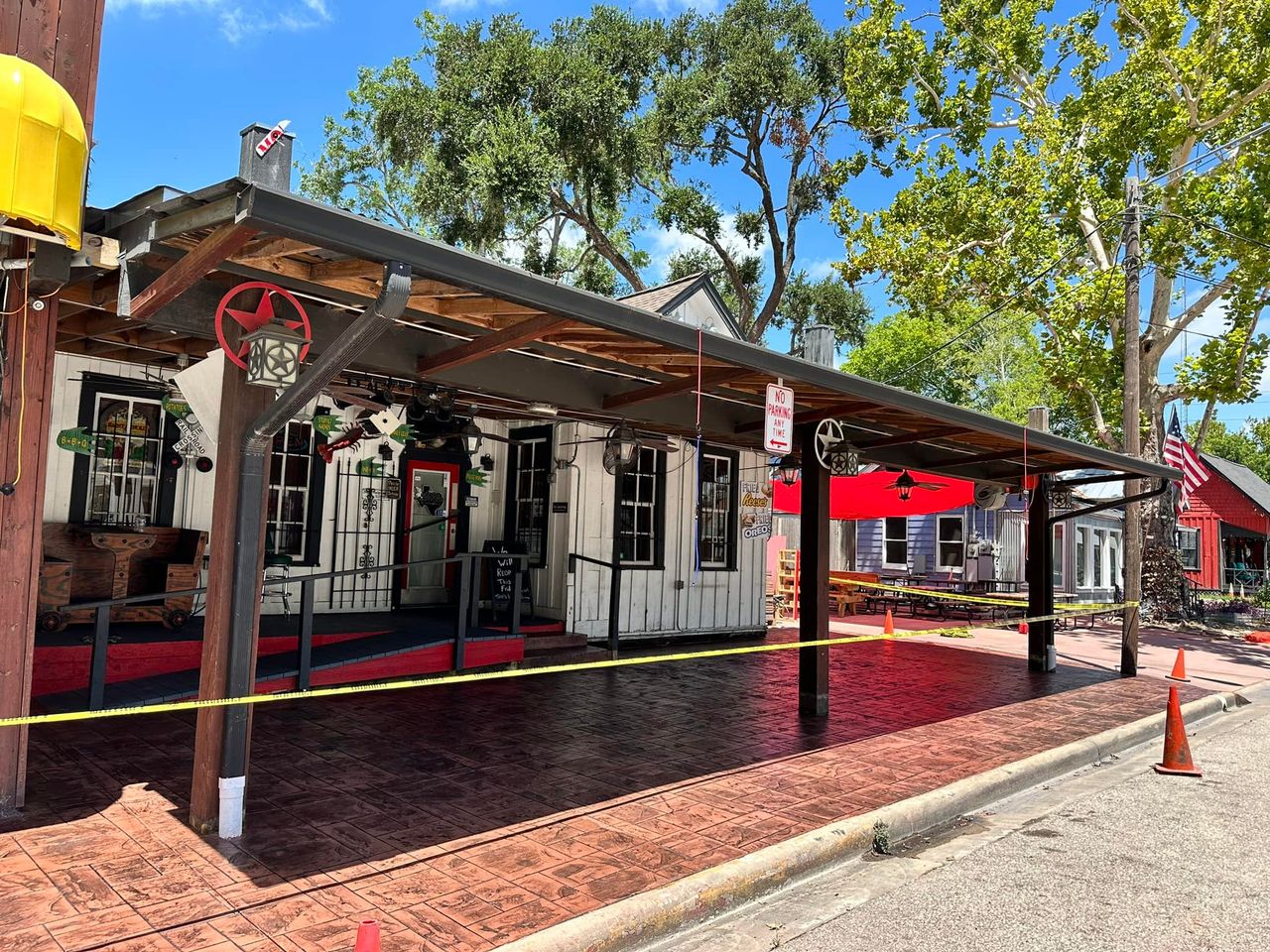
Cost Impact: These custom features require specialized formwork, additional concrete, and intricate finishing. Costs vary greatly based on size and design but can add hundreds to thousands of dollars.
3. Integrated Fire Pits or Fireplaces
Adding a built-in concrete fire pit or a more elaborate fireplace creates a focal point. It extends the usability of your patio into cooler evenings.
Complexity: These structures involve specialized concrete work, often incorporating fire-resistant materials or pre-fabricated firebox inserts.
Cost Impact: This is a substantial addition. A simple concrete fire pit might add $1,000-$3,000, while a custom concrete fireplace can easily exceed $5,000.
4. Lighting and Electrical Conduits
Planning for outdoor lighting or outlets during construction allows for seamless integration. Conduits can be laid within the concrete slab.
Benefits: Provides ambient lighting for evening enjoyment and powers outdoor electronics.
Cost Impact: While the conduits themselves are inexpensive, running electrical lines, installing fixtures, and hiring a licensed electrician add significantly to the overall budget.
5. Edging and Border Details
While a basic patio has straight edges, decorative edging can enhance its visual appeal.
Options: This can include contrasting colored borders, special textures, or integral concrete curbing.
Cost Impact: Adds to both material and labor costs, depending on the chosen design and complexity.
These enhancements allow for personalization. They create a more functional and aesthetically pleasing outdoor space. Always factor them into your initial budget discussions with concrete patio contractors.
6. Drainage Solutions
Proper drainage is essential, especially in areas like Houston, Texas, prone to heavy rainfall.
Surface Drains/Grates: Linear or spot drains can be integrated into the patio design to quickly collect and divert surface water.
French Drains: Can be installed around the patio perimeter to manage subsurface water.
Cost Impact: The cost for drainage solutions varies. Simple surface grates might add a few hundred dollars. Complex French drain systems can add over a thousand dollars.
Ensuring adequate drainage protects your patio and your home's foundation from water damage.
DIY vs. Professional Concrete Patio Installation
Deciding between a do-it-yourself (DIY) approach and hiring professional concrete patio contractors is a crucial choice. It significantly impacts the final cost, quality, and your peace of mind.
DIY Patio Installation
Potential Savings: The primary appeal of DIY is saving on labor costs, which can be a significant portion of the total project.
Feasibility for Small Patios: For very small, basic slabs (e.g., 50 sq ft or less), DIY might be manageable for homeowners with some construction experience.
Challenges for Larger Patios: For typical patio sizes (e.g., 200-400 sq ft), DIY becomes extremely challenging:
Time Sensitivity: Concrete sets quickly, requiring a highly coordinated effort for pouring, leveling, and finishing within a short window.
Manpower: A large concrete pour needs multiple helpers to work efficiently and prevent cold joints.
Equipment: Specialized tools like screeds, bull floats, hand floats, edgers, groovers, and possibly a power trowel are needed. Renting them adds cost and requires learning to operate.
Skill and Experience: Achieving a perfectly flat, level surface with proper slope and a professional finish requires significant skill. Mistakes are costly and difficult to correct.
Physical Demands: Moving and working with wet concrete is extremely physically demanding.
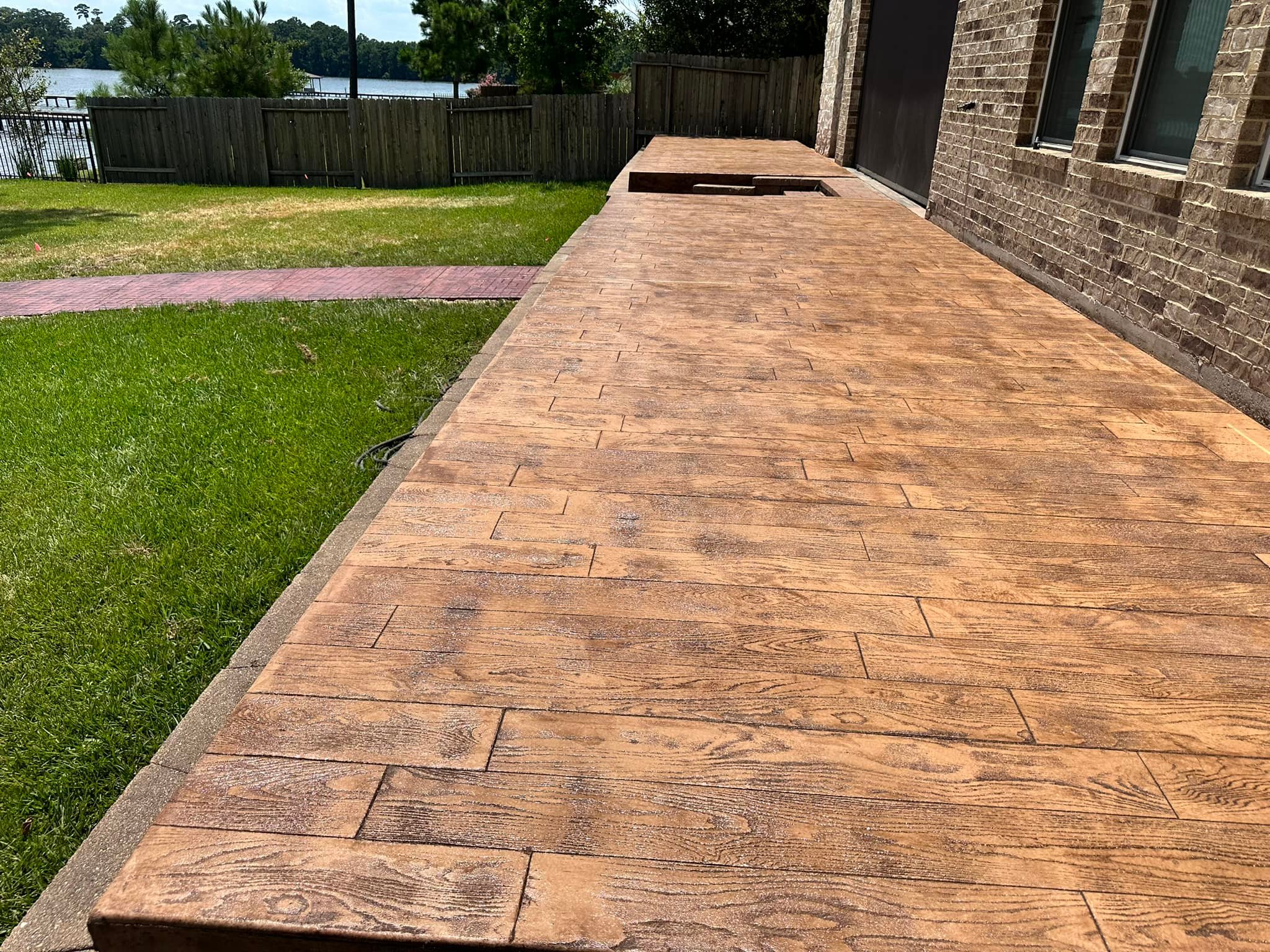
For anything beyond a very small, basic pad, the risks and demands of DIY concrete installation often outweigh the potential cost savings.
Hiring Professional Concrete Patio Contractors
For a concrete patio of any significant size, hiring reputable concrete patio contractors is highly recommended. Their expertise ensures a high-quality, durable, and aesthetically pleasing result.
Expertise and Experience: Professionals possess in-depth knowledge of site preparation, concrete mix designs, proper pouring techniques, and various finishing methods. They understand local conditions, like Houston's expansive clay soils.
Efficiency and Speed: A professional crew has the manpower, experience, and specialized equipment to complete the job efficiently. This minimizes disruption and ensures a uniform pour before the concrete sets.
Quality Guarantee: Reputable contractors stand by their work, often providing warranties. This protects your investment against defects or premature failure.
Equipment: Contractors own or have access to all necessary tools and machinery, eliminating your rental costs and learning curve. This includes pumps for difficult access.
Code Compliance and Permits: Professionals are familiar with local building codes and permit requirements in Houston and surrounding areas. They handle the necessary paperwork and ensure compliance.
Problem Solving: Unexpected issues can arise during excavation or the pour. Experienced contractors are adept at handling challenges and finding effective solutions.
While the upfront cost is higher, the long-term value, durability, and peace of mind provided by professional installation often make it the more economical choice. For homeowners in Houston, Texas, finding local expertise is key.
Long-Term Costs and Maintenance of a Concrete Patio
Beyond the initial installation, understanding the ongoing maintenance costs of a concrete patio is important for a complete financial picture. Concrete is durable but benefits from proper care.
1. Sealing
Applying a high-quality concrete sealer is crucial for protecting your patio. Sealers help repel water, resist stains, and protect against UV damage. This prevents efflorescence, spalling, and color fading.
Frequency: Sealers typically need reapplication every 2-5 years, depending on traffic, climate, and the type of sealer used.
Cost: Material costs for sealer range from $0.15 to $0.50 per square foot. Professional application will add labor fees. This is a relatively small, recurring cost.
2. Cleaning
Regular cleaning helps maintain your patio's appearance.
Routine: A broom, hose, and mild detergent are usually sufficient for routine cleaning.
Deeper Cleaning: For tougher stains or accumulated grime, a pressure washer can be used (with caution to avoid damaging the surface).
Cost: Minimal, primarily involving your time and cleaning supplies.
Promptly cleaning spills helps prevent permanent staining, especially on unsealed or poorly sealed concrete.
3. Crack Repair
While control joints are cut to manage cracking, hairline cracks can still appear over time due to ground movement, drying shrinkage, or extreme temperature changes.
Minor Cracks: Small, non-structural cracks can often be filled with a concrete crack filler or sealant, available at hardware stores. This is a DIY-friendly and low-cost repair.
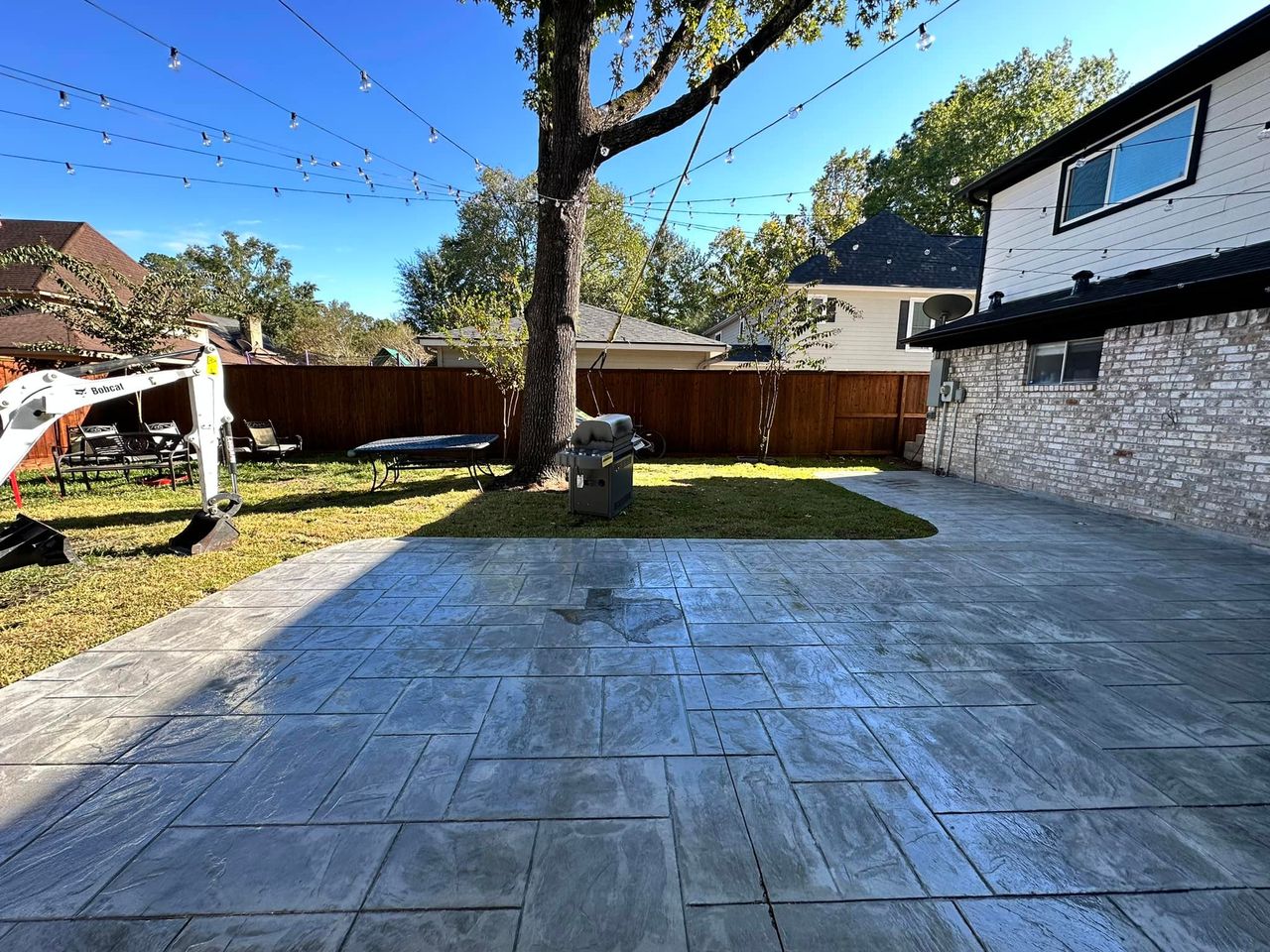
Major Cracks/Settling: Larger, structural cracks, significant spalling, or areas of settling may indicate deeper issues. These require professional assessment and potentially more costly repairs, such as mudjacking (slab jacking) or even partial replacement. This is a potential, but less frequent, high-cost item.
4. Resurfacing or Overlay
If your concrete patio is old, stained, or has numerous minor imperfections but is still structurally sound, resurfacing or applying an overlay can be an option.
Process: A thin layer of polymer-modified cementitious material is applied over the existing concrete. This can be plain or designed to mimic decorative finishes.
Cost: Less expensive than a full patio replacement. Costs vary widely depending on the chosen overlay and surface preparation, but can range from $3-$10+ per square foot. This is a significant but infrequent cost.
Compared to other patio materials like wood (which needs staining/sealing and rot repair) or pavers (which require weed removal and joint replenishment), concrete is generally low maintenance, particularly if properly sealed.
Maximizing Value and Return on Investment (ROI)
Installing a new concrete patio is an investment in your home. It can significantly enhance your outdoor living space and contribute to your property's value and appeal.
Enhanced Usability and Curb Appeal
A well-designed concrete patio extends your home's usable living space. It provides a dedicated area for entertaining, dining, and relaxation. This added functionality is highly attractive to potential buyers.
Decorative concrete finishes, in particular, can greatly boost curb appeal. A beautiful stamped or colored patio can make your home stand out in the neighborhood. It signals quality and thoughtful upgrades.
Durability and Longevity
Concrete is renowned for its durability. A properly installed and maintained concrete patio can last for decades—30 to 50 years or even longer. This long lifespan provides excellent value over time.
This durability means less worry for future homeowners about frequent repairs or replacement. It's a low-stress, high-value asset.
Low Maintenance (Compared to Alternatives)
While not maintenance-free, concrete patios generally require less routine upkeep than wood decks (which need regular staining/sealing and rot inspection) or paver patios (which can require weeding and joint sand replenishment).
This relative ease of maintenance is a strong selling point for busy homeowners. It means more time enjoying the patio and less time working on it.
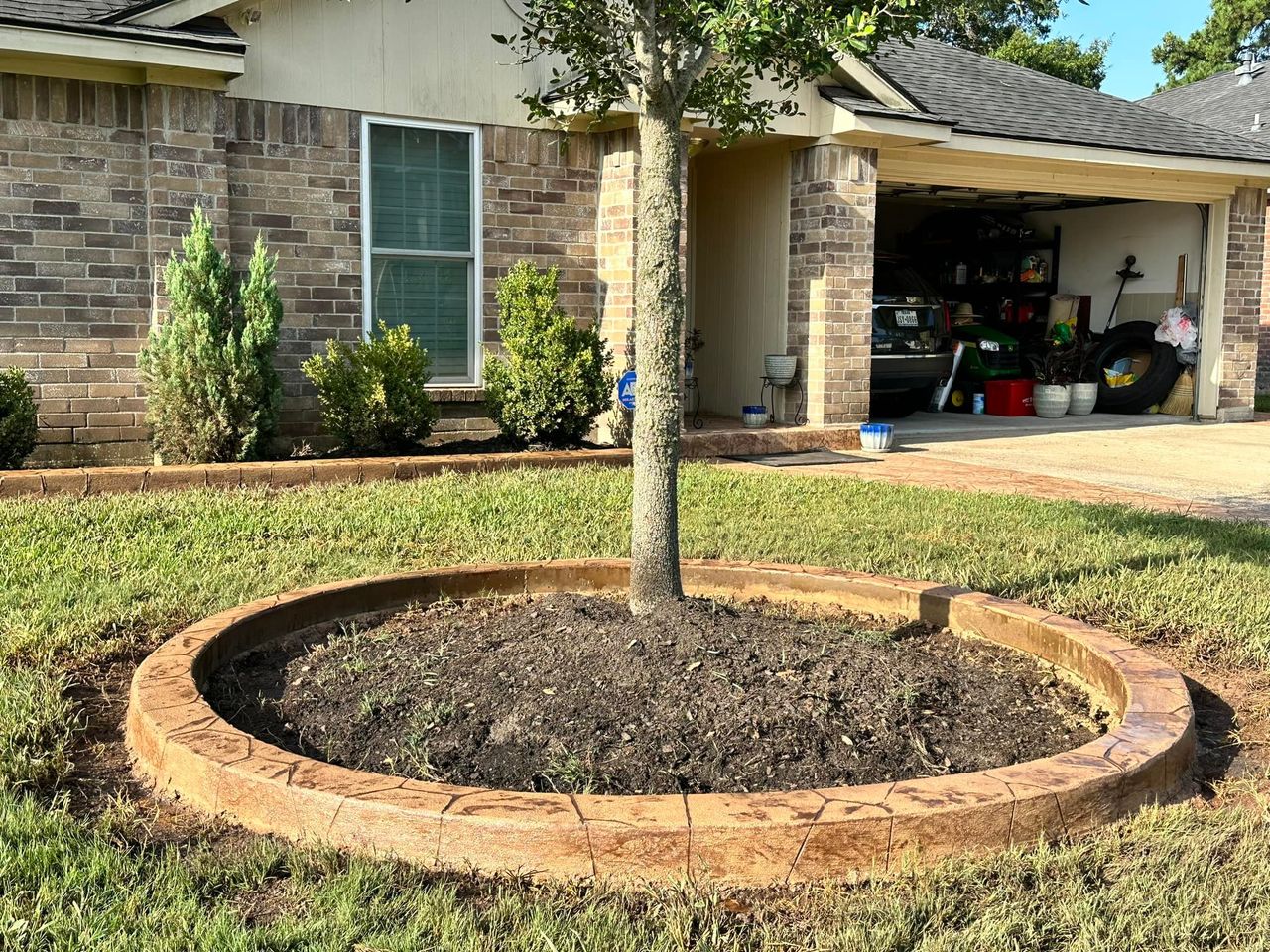
Market Competitiveness
In the competitive real estate market, a well-executed outdoor living space can give your home an advantage. It positions your property as move-in ready and updated. This can lead to a quicker sale.
The investment in a quality concrete patio often yields a strong return. It contributes to a higher perceived value, potentially justifying a higher asking price.
Finding Reputable Concrete Patio Contractors in Houston, TX
When you're ready to get quotes for your concrete patio, finding reputable concrete patio contractors in Houston, Texas, is essential. Local expertise is crucial due to Houston's specific climate and expansive clay soils.
Why Local Expertise Matters in Houston
Soil Conditions: Houston's expansive clay soils can cause foundation and slab issues if not properly addressed. Local contractors understand how to prepare the sub-base and use appropriate reinforcement to mitigate these risks.
Climate: The hot, humid climate affects concrete curing. Experienced contractors know how to manage the pour in these conditions to prevent premature drying and cracking.
Local Regulations: Reputable local contractors are familiar with the permitting requirements and building codes specific to Houston and surrounding municipalities.
What to Look for When Choosing a Contractor
Licensing and Insurance: Always verify that the contractor is properly licensed and carries adequate liability and worker's compensation insurance. This protects you in case of accidents or property damage.
Experience and Portfolio: Ask to see examples of their previous concrete patio projects. Look for consistency in quality and finishes similar to what you desire.
References and Reviews: Request references from recent clients and check online reviews on platforms like Google, Yelp, or BBB. Look for consistent positive feedback.
Detailed, Itemized Quotes: Get at least three written quotes. Ensure they are itemized, clearly stating costs for all components: excavation, sub-base, concrete type (PSI), reinforcement, formwork, chosen finish, and any additional features. This allows for fair comparison.
Clear Communication: Choose a contractor who communicates effectively, answers your questions promptly, and explains the process thoroughly.
Contract: Insist on a written contract that outlines all project details, costs, payment schedule, timeline, and warranty information before any work begins.
For concrete patio projects in Houston, Cincos Concrete LLC is a trusted local company with a strong track record. They understand the nuances of local conditions and are committed to delivering high-quality results. Contact them for a professional consultation and estimate.
Conclusion
The average cost to install a concrete patio varies widely, typically ranging from $4.50 to $18.00+ per square foot. This significant range is influenced by numerous factors, including the patio's size and shape, slab thickness, concrete mix (PSI) and admixtures, site preparation complexity, sub-base requirements, type of reinforcement, and accessibility.
However, the most impactful cost determinant is the chosen finish. While a basic broom finish is the most economical, decorative options like stamping, coloring, exposed aggregate, or custom patterns can substantially increase the price, reflecting the added labor, specialized materials, and artistic skill required.
For any concrete patio project beyond a very small scale, hiring professional concrete patio contractors is highly recommended. Their expertise ensures proper installation, adherence to local conditions (like Houston's expansive clay soils), and a durable, aesthetically pleasing result. While they represent a significant portion of the cost, the value they provide in quality, efficiency, and long-term performance often outweighs any perceived DIY savings.
By carefully considering all these factors and obtaining detailed quotes from reputable professionals, you can confidently plan and budget for a beautiful and long-lasting concrete patio that enhances your home and lifestyle.
